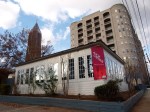 In honor of the first World Statistics Day, a few MARTA bus numbers:
In honor of the first World Statistics Day, a few MARTA bus numbers:
500,000 miles or 10 years: The maximum service life of a bus. After buses are retired from service, they’re sold on a public online auction site.
$2,500: The approximate price a second-hand bus usually goes for at auction. They’re generally purchased for parts or scrap metal.
1,290,000: The approximate number of paper timetables MARTA’s print shop prints each year. MARTA’s manager of communications, Cara Hodgson, said in an email that there’s been “no noticeable change” in the demand for paper schedules since they became available online.
Timetables for some routes have to be printed more than others. The three most in-demand printed schedules are for routes 5-Piedmont Road/Sandy Springs, 15-South DeKalb/Candler and 39-Buford Highway. Three of the least in-demand schedules are 47-I-85 Access Road/Briarwood Rd, 103-N. Shallowford Road/Peeler Road and 104-Winters Chapel Road.
8,978: The number of bus stops in MARTA’s service area
4,133: The number of those stops that are in the city of Atlanta
800 to 1000 feet: MARTA’s guideline distance for separation of bus stops. Factors like development density, land use, accessibility and safety sometimes require stops to be placed closer together or farther apart.
5.01 route miles: The length of MARTA’s shortest bus route, which is 67-West End. The longest is 143-Windward Park and Ride at 35.1 route miles
148: The average number of weekday boardings for route 148-Medical Center/Riveredge Parkway, a peak-time-only route, which has the lowest ridership
6,982: The average number of weekday boardings for route 39-Buford Hwy, the route with the highest ridership
$22.37: The average cost for MARTA’s sign shop to manufacture a roadside bus stop sign
92: The number of bus routes MARTA currently operates. That total is down about 30 percent from 133 routes in 2007, nearly 27 percent less than the 126 routes in 2002, and about 41 percent less than the 156 routes running in 1997
Sources: MARTA bus service and operations management staff and Cara Hodgson, director of communications
Tags: bus, MARTA, statistics, transit














